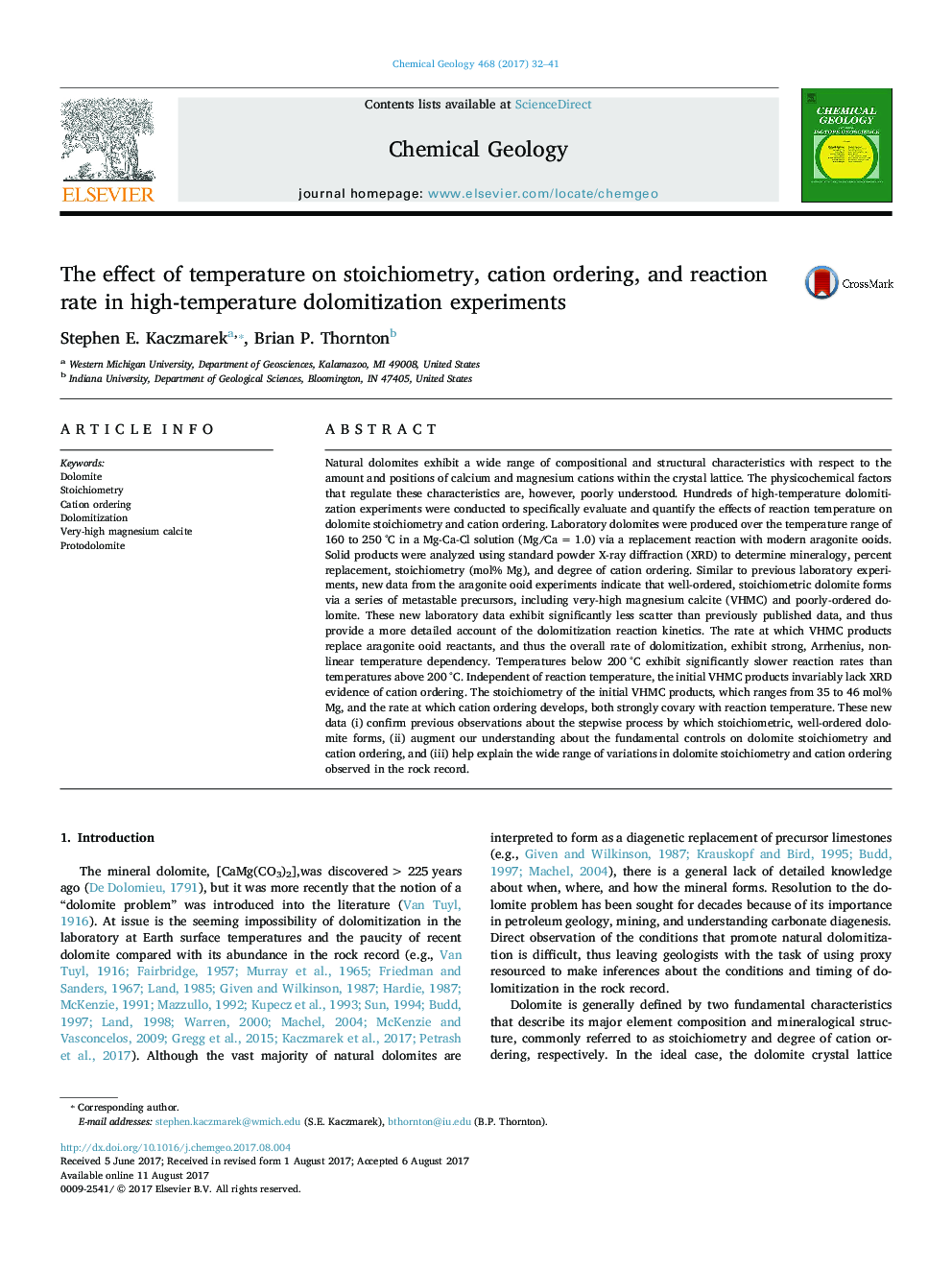| کد مقاله | کد نشریه | سال انتشار | مقاله انگلیسی | نسخه تمام متن |
|---|---|---|---|---|
| 5782713 | 1637506 | 2017 | 10 صفحه PDF | دانلود رایگان |

Natural dolomites exhibit a wide range of compositional and structural characteristics with respect to the amount and positions of calcium and magnesium cations within the crystal lattice. The physicochemical factors that regulate these characteristics are, however, poorly understood. Hundreds of high-temperature dolomitization experiments were conducted to specifically evaluate and quantify the effects of reaction temperature on dolomite stoichiometry and cation ordering. Laboratory dolomites were produced over the temperature range of 160 to 250 °C in a Mg-Ca-Cl solution (Mg/Ca = 1.0) via a replacement reaction with modern aragonite ooids. Solid products were analyzed using standard powder X-ray diffraction (XRD) to determine mineralogy, percent replacement, stoichiometry (mol% Mg), and degree of cation ordering. Similar to previous laboratory experiments, new data from the aragonite ooid experiments indicate that well-ordered, stoichiometric dolomite forms via a series of metastable precursors, including very-high magnesium calcite (VHMC) and poorly-ordered dolomite. These new laboratory data exhibit significantly less scatter than previously published data, and thus provide a more detailed account of the dolomitization reaction kinetics. The rate at which VHMC products replace aragonite ooid reactants, and thus the overall rate of dolomitization, exhibit strong, Arrhenius, non-linear temperature dependency. Temperatures below 200 °C exhibit significantly slower reaction rates than temperatures above 200 °C. Independent of reaction temperature, the initial VHMC products invariably lack XRD evidence of cation ordering. The stoichiometry of the initial VHMC products, which ranges from 35 to 46 mol% Mg, and the rate at which cation ordering develops, both strongly covary with reaction temperature. These new data (i) confirm previous observations about the stepwise process by which stoichiometric, well-ordered dolomite forms, (ii) augment our understanding about the fundamental controls on dolomite stoichiometry and cation ordering, and (iii) help explain the wide range of variations in dolomite stoichiometry and cation ordering observed in the rock record.
Journal: Chemical Geology - Volume 468, 30 September 2017, Pages 32-41